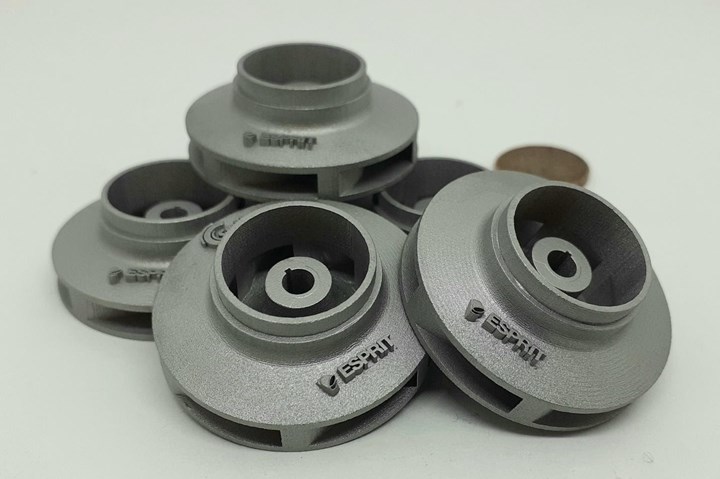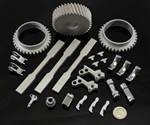ESPRIT CAM Now Supports Binder Jetting Technology
ESPRIT CAM collaborates with France’s Technical Centre for Mechanical Industry (CETIM) to further enhance the support of additive technologies.

Sintered impeller 40-millimeter design by CETIM, prepared with ESPRIT and printed on Digital Metal equipment. Photo Credit: CETIM/ESPRIT
ESPRIT CAM (Grenoble, France), a computer-aided manufacturing (CAM) software that supports a variety of CNC machines, has deepened its existing partnership with France’s Technical Centre for Mechanical Industry (CETIM, Senlis) to include additive manufacturing (AM), including support of direct energy deposition (DED) and powder bed fusion (PBF) with products that have been tested and validated by industrial partners. CETIM was established in France in 1965 in order to improve companies’ competitiveness through mechanical engineering, transfer of innovations and advanced manufacturing solutions.
ESPRIT says in 2020 its teams were continually developing products to enhance the support of additive technologies. For example, ESPRIT released a new feature which adds support to several new slice formats such as 3MF and Binary CLI, further improving interoperability between software and machines.
Relying on an established collaboration with CETIM, ESPRIT teams validated the support of a third AM technology: binder jetting, which uses a liquid binding agent to bind powder particles one layer at a time until the final product is complete, or “printed.” By preparing data in ESPRIT Additive Suite products, CETIM was able to build a job made of six impeller parts with a binder jetting machine from Sweden’s Digital Metal.
“We used the ESPRIT Additive PBF product to slice the 3D model and produce a compatible file format that would be readable by Digital Metal’s machine,” says Clement Girard, ESPRIT’s additive product manager. “All data preparation was done using a version of ESPRIT Additive PBF that’s still in development.”
Although ESPRIT Additive support for binder jetting technology is not yet commercially available, ESPRIT says this success demonstrates what’s possible when both teams collaborate closely.
Related Content
-
How to Supply Cooling to Additive Tooling
Additive tooling provides limitless options for cooling a mold’s difficult-to-cool areas.
-
Mold Builder Uses Metal 3D Printing to Bridge Medical Product Development to Production
Westminster Tool uses metal additive manufacturing for medical device OEM, taking lessons learned from R&D in the prototype mold phase to full-scale production molding in a fraction of the time.
-
MMT Chats: 4 Keys to a Successful Mold-Building Operation: Innovation, Transparency, Accessibility and Relationship
MoldMaking Technology Editorial Director Christina Fuges chats with Steve Michon, co-owner of Zero Tolerance in Clinton Township, Michigan, about the excitement of solving problems, the benefits of showing gratitude, the real struggle with delegation and the importance of staying on top of technology. This episode is brought to you by ISCAR with New Ideas for Machining Intelligently.













.jpg;maxWidth=300;quality=90)

